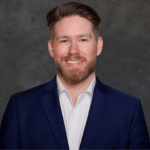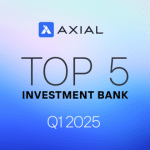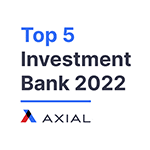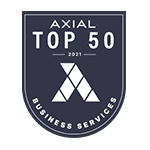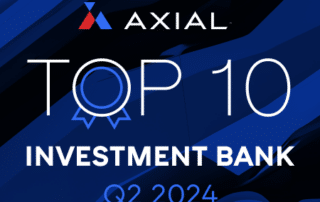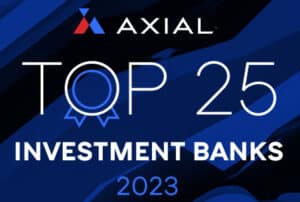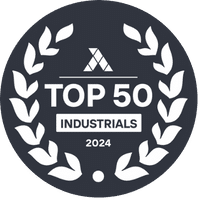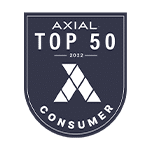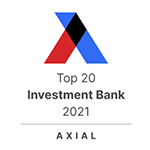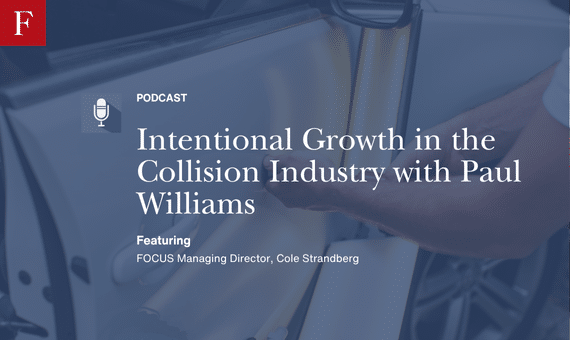
Intentional Growth in the Collision Industry with Paul Williams
On this week’s episode, Cole Strandberg chats with someone who’s not only scaled his business, but done so by making smart partnerships, staying true to quality, and embracing growth with purpose – Paul Williams, CEO of Brightpoint Auto Body. Since his last time on the show, Brightpoint has expanded its footprint, refined its strategy, and positioned itself for what’s next in collision repair. In this conversation, they talk about how to grow with intention, how the right financial and operational relationships make a difference, what’s on Paul’s radar at SEMA, and how he sees the future of our industry unfolding.
Cole Strandberg: It’s been a little while since we had you and we have some really fun updates because it is an entirely different situation than it was at that point in time. I just listened re. Listened to that episode in that conversation. We’re going to include that in the show notes. So you guys listening can see this evolution happen back to back in real time. If you don’t remember this episode at that time, you had three brands and five locations. So this is going way back. I want to get to where we are today, but before we do that, give us a kind of a viewpoint on who you are, what has your journey look like and how have you arrived to where you are and where Brightpoint is, is today.
Paul Williams: Yeah, thanks, Cole. It’s. It’s been a, an awesome journey, to be completely honest, you know, and it’s fascinating as well. We’ve had some tremendous growth and, you know, lucky enough for us, we’ve had the pleasure and the opportunity to acquire some great businesses all over the US and continue our growth and footprint throughout. And it’s just been, it’s just been a lot of fun. And, you know, to be honest with you, it’s been, it’s been quite humbling to, to be where we are today from where we were. I think it was, I think it’s almost been less than 18 months truthfully. So it’s just been fantastic and we’re excited. We’ll just keep growing.
Cole Strandberg: Man. You’re on site at an acquisition today or at least in town for an acquisition today. You guys are rocking and rolling. Tell us about where Brightpoint is today.
Paul Williams: Yeah, Bright Point today. We just wrapped up our 36 location. We just wrapped up when it’s in Marietta, Georgia. This will give us our fourth location in this market. So. Which is really exciting. We were on site yesterday in another state. We’ll get the press release and the announcement on that. But we acquired three and did the announcement yesterday. They officially will close November 12th. So we’re excited for that. And the, the organization is just a fantastic group and just a great team of operators. So looking forward to that, man.
Cole Strandberg: So cool. Such tremendous growth. And before we dive into some of the mechanics behind that, I, I think folks listening are how the heck are you doing it? And we’ll talk about the financial structure and your partnerships there. But more so how are you differentiating yourself? Every one of these acquisitions, I imagine have gotten acquisition interest from somebody in the past. If they hadn’t, you probably wouldn’t be buying them because they’re not, they’re not getting that interest. How are you different from everyone else and how is that message resonating with potential sellers?
Paul Williams: Yeah, I mean that’s a great question. We tend to have a, a pretty strong pipeline. A lot of our, our opportunities are coming from, you know, single shop owners, owners who have been in the business for 30 to 40 years. Right. They don’t typically have that generational that son or son in law to take over that business. And so what they’re doing is they’re looking for, you know, great family owned operated businesses that are going to take care of their people. And that’s what we thrive on at Brightpoint is, you know, we’ve always been a big promoter of our employees. I mean we still value them as the most important asset to our business today is, is our teammates and our people. And that’s, you know, one of our most basic and most important assets of Brightpoint. You know, I tell people all the time, it’s so funny, I’m like, you know, we’re like, oh, what do you do? You’re in the auto body industry, collision repair. And I’m like, I’m in the people business. You know, and we fix cars at the same time, but, you know, we, we take care of people and that’s number one. And as long as we do that and stay true to ourself and our teammates and our partners, everything seems to just fall in line with you because, you know, technically you’re, you’re leading from the front and they’re working right alongside you. So our model at Brightpoint is, is nobody works for anybody. We work together.
Cole Strandberg: Love it, man, love it, love it. Sounds like a fantastic culture. And not to pop quiz you, but just to finish laying the foundation here, what markets are you guys in today?
Paul Williams: Yeah, we are across. We’re from, from west all the way Midwest to the east. I mean, we’re right now currently in 12 states in our, our footprint. And the way we do things is we’ll go into, you know, I’ll back up. When I had the pleasure of working at Gerber, you know, I was able to view the, the whole country, right, As a whole. And so we would know, you’d look at it and go, these are really good markets that you can do really good business in. You know, the people are good, great to work with, the labor laws are great. It’s just a good business oriented state. And so we’ve had the pleasure of understanding where those are. And that’s where we strategically place shops now. And we’ll go in with a beachhead, whether that might be one location or two, but it will have a pipeline of three or four or five right behind it of singles. And we’ll go in and acquire that local family business that’s 40 years in town that, you know, their name is on the little league field down the street. And they’re a big supporter of the community. And those are the businesses that we, we like to, to partner with and, and maintain that legacy throughout.
Cole Strandberg: And just to clarify, I, I think another differentiator here is you do keep regional brands in that hub model, is that right?
Paul Williams: That’s correct. Yeah.
Cole Strandberg: How many brands are you operating today currently?
Paul Williams: We could name them if you don’t. If you want.
Cole Strandberg: Let’s do it, man. I know I’m in your pop quizzing to see if you can remember all 12 states.
Paul Williams: And geez, it’s like a geographical test every time somebody asks me where we’re at, you know. But currently we have, we have, we just closed our fourth location in Idaho. And in the Boise market, we’ve got two locations in Utah just outside of Salt Lake City. So, so in the Boise market we have two locations Branded Urea Auto Body, we have a location called Capital Auto Body and then Franklin Auto Body. And then obviously in Utah we have two. One is Dentmaster and that is a special location. It does. It’s probably one of the only locations that has a RV booth to do RV repairs and tall vans and things like that. So that’s a great location. And then we have Valet Auto Body in, in Salt Lake and we’ve got two in Henderson, Nevada. And we are literally just about to get the final permit on our third location in Las Vegas North. Las Vegas called Frank’s north, which is going to be a great location. It’s fully air conditioned. So as you can imagine, in Vegas that’s, that’s a hot commodity for a body shop. So we’ve got one in Bossier City, Red River Collision, and then we have Friendship that is in the Atlanta market. There’s three of those. We just acquired Ricky’s Collision in Marietta today. Actually that is wrapping up this afternoon. And then in Tennessee we’ve got Custom Collision, two of those, First Choice in Dover. And then we also have a Joel’s Auto Body just outside of Nashville. In Dixon, Tennessee we’ve got Stonewall Collision and there’s 16 of those and they run throughout Michigan, Ohio, Maryland, Pennsylvania. And then we have a location called Isom Collision that’s in Virginia. So there you go.
Cole Strandberg: Love it, Love it. I mean, you talk about differentiation and there are groups out here doing this today. I think it’s cool for folks especially who care about that legacy preservation as much as anything you’re doing, that you’re offering, that you’re taking advantage of these brands, the reputation among the community. I think it’s a great differentiator. Not right for all, but right for plenty. So real quick, before we dive into more about the business today, your strategy, your perspective on the market, because it is a very interesting time I think in our industry set the stage for us. About your role at Gerber and how many shops and people were you overseeing and, and what made you kind of look to take that next step in your career as a CEO?
Paul Williams: Yeah, you know, I think in the first one, I think we ran through this a little bit. And I still tell this almost every day. I think about it. You know, when I joined Gerber from a, from a small family owned business, I say small, you know, it was with quite a few shops. And when I joined, when I joined Gerber, it was like I went to school for about four and a half years. You know, truthfully, I mean, there’s there’s so many things I wish I’d have known when we had our own shops, when we, when it was our family owned business because it could have just elevated us and set the stage in so many different ways of things that we had no idea about. So four and a half years of going to school, it was, it was a great degree. Getting it at Gerber University again, there’s a lot of things they do really, really well and there’s some things that you know, everybody could all work on to do better. And you know, I really wanted to get back and get back to the basics of taking care of people and not putting a number on them and really looking out for their future for, for their kids, their families and their growth and their career. And so that’s how going into Brightpoint started, truthfully.
Cole Strandberg: Love it, love it, love it. A great journey, a great story and I think the fun parts really were at the very beginning stages of it. I think there’s a lot of success here and fun story to tell. When you talked about kind of going out CEO, entrepreneurial, you see a lot of these kind of operating partner led up and coming platforms among private equity. You sort of did that but you also didn’t, you did it very differently. Talk about your partnership and how that all came together.
Paul Williams: Yeah, you know when, when someone’s choosing a, whether it be a sponsor or some sort of financial backer, you know, I always tell people the biggest thing you need to do is make sure that you are align with, with them on a personal level. Make sure you see the same vision because there’s going to be great, great days and there’s going to be, there’s going to be some challenging times and I think again we’ll probably talk through this at some point but you know, when it gets challenging out there and that’s when you need to communicate the most and need to make sure that you are working with a great team and a great partner who, who understands it. And so partnering with Southworth it was, you know, when I met Jeff Presley on the first call it was like this is, this is the guy. And, and strangely enough I had two other private equity groups I was talking to of doing a starting out founder operated collision roll up and when I got off the phone, my wife calls me, she goes how’d it go? And I said I really hope they call me back. You know, it was kind of that gut feeling of like this would be really good and it’d be a lot of fun. And sure enough here we are today. And Jeff, my partner, is just phenomenal. Just great human being. It’s a family office, you know, and they just do great things.
Cole Strandberg: So very cool. What do you think? And I know it’s so tough to kind of probably dial your mindset back to then what jumped out as the right partner to you, because that answer is so different to everybody. It’s a very personal thing, but when you know it, you kind of know it.
Paul Williams: You know, you always go with your gut. Right. That first instinct is always the one you, you should, you should listen to. You know, where they are, their family office, which I really, really liked. Right. And his son works in the office, Clay Presley. And everybody that’s been that office has been with, with Jeff and Southworth for a very long time. And that tells you a lot about tenure and, and people being happier where they work. And then the people who you’re working with, they enjoy it, right? So they want to stay in that. Longevity is, is key. And then obviously interacting with them and, and just the sincerity and the loyalty was. It just told me everything, you know, and understanding, you know, all the people that work there and meeting some of the folks through some of that, you know, interview and going into the office, the atmosphere, it was just, you knew it was home is really how it felt.
Cole Strandberg: So many conversations across our industry about private equity. I think the, the world of family office is fascinating, but we don’t hear it nearly as much. I think a lot of people might even have questions around what exactly that is. Tell us about what makes a family office different than a more traditional private equity group.
Paul Williams: Yeah, private equity. So most of that comes from, you know, a multitude of. It could be, you know, they’re seeking their investment and their funds from smaller investment funds that roll up into the larger fund that they raised. It could be up to 50 million or even $100 million. We, we don’t have a fund for, for Bright Point. And so when you look at private equity, you know, they, the biggest thing for them is you got to put money to work and you gotta, you gotta get moving and, and get that money working, right? And so you gotta just. It’s quick, it’s fast, and sometimes you might do things that you maybe don’t want to do, right? But you got to make acquisitions because you got to put the money to work. And timing is everything. And so for us, you know, we’re, we’re definitely disciplined on how we operate. We’re very disciplined on our acquisitions and timing. And we want to make sure when we do the integrations that we do not miss a beat. You get one opportunity with these folks and you’ve got to make it last and you got to make it memorable for them and not chaos. So.
Cole Strandberg: No, no doubt, well put. And I think one benefit and differentiator of family office is that the time horizons, not always, but they tend to be at minimum more flexible, at most a lot longer. It’s generational wealth and you hear about decades of kind of focus, not focus on that more traditional 3, 5, 7 year hold that’s often mandated by private equity. So a really interesting differentiator. Super cool. Going back to that and having that partner that’s allowed you to expand so quickly with phenomenal leadership. No doubt that would not be possible with just the capital. How do you balance that growth? While going back to your earlier words of kind of it’s a people business, making sure that that comes first. It’s a challenge as, as scaling companies grow to keep that culture intact. How do you go about it?
Paul Williams: Yeah, we, you know, we’ve been lucky enough to have a great team of operators join us over the last 18 months to two years. You know, people who have done this before in the same scale we’re at Gerber and so we, we’ve had a, we have a playbook. So to say that really it’s step by step on how we’re going to roll out and what we do by phase, you know, and how often we’re, how long are we there for and what’s our process. And we’ve really been able to fine tune that, especially with the, the amount of acquisitions we’ve done over the last 18 months, two years. We’ve really defined that process and we’ve learned we’ve made some mistakes. I mean, let’s face it, I mean we’re still learning as we go with the challenges and the way things change. But I think we’ve done a very good job of, of getting it to be relatively seamless and successful through the process.
Cole Strandberg: Love it, man. So love that kind of background. Love hearing the fascinating update on where we are today. And super, super cool to see that side by side of hey man, three brands, five stores to this behemoth and super healthy organization you’re building. Really fun. I want to zoom out as this is a SEMA oriented series. I want to talk a bit about sema. I want to zoom out a little bit on the industry as a whole. Even before we get there, before we hit record, we were talking about what a unique inflection point this industry is at today. Everyone’s talking about claims volume, insurance, obviously. We just had a very large M and A activity announced in the industry here over the past 24 hours. Where do you see kind of the state of the industry today?
Paul Williams: You know, it’s, it’s, it’s super funny. I was on a flight last night, I didn’t even know the. The news broke yet. Right. With this.
Cole Strandberg: I was on a flight too.
Paul Williams: Yeah. Luckily I had wi fi and my phone just like blowing up. And I’m wasn’t.
Cole Strandberg: Same experience, my friend. Same exact experience.
Paul Williams: And first thing that came to my mind was like, no way. Like, where are you getting this from? And then I got the Yahoo link and I’m like, wow. You know, and first of all, congratulations to, to both of them. That is just, that’s an amazing partnership and there’s definitely be some heavy lifting and no better way to do it than with those two teams. So exciting and congrats for them. You know, it’s funny, I saw a friend of mine text me and he goes, it’s kind of going to be like the Home Depot and the Lowe’s here in the next 10 years. Right? Like, yeah, it’s going to evolve into a couple large groups and you’re gonna have some, some ace hardwares out there, but it’s going to be a Lowe’s and a Home Depot kind of look. And when I saw that, I went, that’s probably about right, you know, so no, no doubt.
Cole Strandberg: Fascinating for sure. And I think there are some impacts for the long term that we probably don’t want to do too much speculating about until we know more. But very, very interesting. And it comes at a very unique time given the rest of what’s happening in the industry. I’ll tell you, from my perspective, it remains positive. I look Back to like 2015, 2016, it felt really negative, but there’s no doubt some significant headwinds facing our industry. What are you seeing out there? How do you feel about kind of the state of the industry given claims volume, insurance relationships at a really unique inflection point? Where’s your mindset for the next three to five years of this industry?
Paul Williams: Yeah, I mean, we’ve seen this before. You know, pre. I always, always put that post in the road or that stake in the ground is like, pre Covid.
Cole Strandberg: Yeah.
Paul Williams
And then post covet. Right. Because there’s so many things that took place prior to that. And you know, if you look, you know, before COVID I mean, you know, we were all, you know, performing to, to retain and get additional volume. And we were out selling. That was what we used to do. And then you have Covid and then the influx of, of severity. You know, you had some, some inflation increases through, through parts and labor. And so all those things, you know, contributed. I will say it will come back around. The insurance has shifted. There is a lot of things that have played a role in it. I think volume is down across the board. We all know that it, I mean it’s, everybody talks about it. I think that it’s going to come back and the insurance companies I think are going to work hard to reduce their rates to get back out there and be competitive. You know, you’ve got a lot of big insurance companies that used to be top three and now they’re like number eight and then you’ve got some that were number four and they’re number one. And so I’m hoping that they’ll be able to get more aggressive and some of these tariffs will start to reduce and they can reduce their underwriting and reduce the, the amount of expense for insurance and get some of the folks back to not being scared to, to put claims through and get their cars fixed. So.
Cole Strandberg: Right on. We’re having so many different factors hitting at the same time. You do have tariffs, you do have some macro question marks. You have the insurance company dynamics and the jockeying for position there. You also have technology. And, and my question for you, I think this is a pretty polarizing topic, but are we seeing the impact finally on some of these collision avoidance systems playing a role, even a small one, in the decreased claims volume?
Paul Williams: I think you might see a slight impact from that. There’s still a huge human element to all of these devices, number one. And number two, I think with how fast the volume shifted for us, you would have to have seen the consumer purchases have this massive shift over that course for all to hit us in this 12 month period? I’d say, and that didn’t happen. And so I think you’re seeing a little bit of it from the collision avoidance. But I think a lot of it is just due to what’s happening in the economy and where folks are at. And when people get nervous, they just do nothing. Right? When they get scared, everybody stops. And I think that’s where we’re at today. And I think as things settle down and consumer confidence increases, I think you’ll start to see it get back to a little more usual. I don’t think it’ll ever get back to what it was from that over capacity standpoint. But I would bet you we start to see a good increase over the next three months to six months is what my guess is.
Cole Strandberg: Man. I am hearing the industry having a ton of bullishness around Q1 2026 and there’s reasons for it. Maybe it’s a gut feel, maybe there’s some data to support it, but that’s a resounding theme and I like where we’re trending here. We talked about some of the negatives. I want to flip the script. We have SEMA coming up at the time of this recording. Next week at the time of folks listening to this will be at SEMA live and in person. As an industry though, heading into this, obviously a very exciting, fun week. What gives you the most optimism about where this industry is headed? Where do you view the opportunities? Lying?
Paul Williams: Yeah, I think, you know, to be where we’re at, I think is we’ve come a long way in the last five to eight years. Right. Technology, you’ve got the Internet has made this world so much smaller and there’s so much more education going around. I think that the, the collision space is headed in a, in a, in a good direction. Some people will probably say it’s not right, but when you, when you put money into the space and you start to put more, you know, educational purpose out there and training, it’s going to be better for everybody. Especially with ADOS calibration and the advancement. I think AI is, AI is no joke and it’s, it’s coming and it’s, it’s here to stay here real quick. So I think that’s exciting. Yeah, I think we’re headed in the right direction, to be completely honest with you.
Cole Strandberg: Love it, man. Nope, I’m with you. But I’m an eternal optimist so I want to be, you know, gut checked on occasion as well. So I’m happy to hear we’re on the same page. Let’s talk sema. A lot to be excited for. I leave every week both exhausted and energized. And I anticipate no different here. Technology, seeing everybody in one place together. As an industry, it’s super cool. Outside of coffee with, between you and I on Tuesday morning, what are you most looking forward to out at sema?
Paul Williams: Yeah, you know, it’s to your point, it’s, it’s great to get everybody in a short radius. Number one, that’s my hometown. That’s my, that’s my spot. Right. And so it’s always good to get back and, and see familiar faces. But it’s always good to really get together with people and just kind of just talk openly. Right. And not in this kind of really set business format, you know. And you get to get to some of these after parties or cocktail hours and just kind of let loose and just be open and talk and have a great time. I think it creates relationships which I think is the most important thing in this business. And if you look back probably, I don’t know man, it’s probably been. For ME it’s been 15 plus years. There’s been, there’s been partners that were at one insurance company and now they are at a different insurance company at some other level. Right. And they’ve all elevated themselves up to VPs and which is really fascinating to see and watch the growth there. And just. I’m really looking forward to getting together with a lot of people and chatting about the business. There’s, there’s plenty of it to go around so there’s no need to, to, to not share information in my opinion.
Cole Strandberg: All right. On man. How do you typically spend your time out in Vegas? We have a lot of collision repair centric events. Of course, you got all the paint companies, the equipment providers, throwing some after hours activities. You got walking the show floor. Where do you typically kind of focus your focus while out at sema?
Paul Williams: Yeah, I definitely get out to the nabc. Got to give out to the car. The car giveaway. That’s always amazing to, to be a part of. Number two is I like to get in the equipment, see what’s coming. You know though it’s on the horizon, what everybody’s looking at. You know, you definitely won’t be last to the party on technology. And so that’s a, that’s a big one for us. Those are probably the two places I, I spend majority of my time. And then after that it’s usually just, it’s meetings and setting up lunches or coffee dates, so to say. Right. With friends and partners.
Cole Strandberg: Right on, man. I’m with you. Last year we had way too many meetings to where I spent about an hour on the show floor which was a travesty. We’re working it better because there’s nothing cooler than getting to take a peek at the equipment, getting to take a peek at all the innovation. And oh by the way, there’s some super cool cars right there to distract from, from business as well. But always a fantastic time.
Paul Williams: No.
Cole Strandberg: Beautiful, man. Cic. Great event. There’s the MSO symposium which is always great. Strs NABAC so much to do that. If you’re listening to this and you’re not out at SEMA this year, stay tuned for some recaps. However, make sure you go next year. This is if you want a finger on the pulse of the collision repair industry, the broader automotive world, which I think is really valuable. If we’re not paying attention to what’s happening in oe innovation and innovation in other sub sectors of automotive, we’re going to be left behind and this allows you to make sure that does not happen. So big, big advocate for sema. Now we just talked a lot about a lot of things, but at the end of the day, the collision vision is about giving operators, aspiring leaders, current leaders, some actionable takeaways. So I want to paint a little bit of a scenario here for you. If you’re an operator listening to this and you’re looking to scale your business, you look at yours is a perfect case study for that. An amazing story of scale. What are the one or two kind of fundamental moves you should be making to build that foundation that can support that scale?
Paul Williams: Team is everything. You hear me talk about this all the time. And the people you got to surround yourself with the right people. This the same team that’ll run alongside you. That’s number one. If in, if you’re a single shop owner and, and touching on this is important. If you’re a single shop owner, it’s very important to make sure that the current shop you have runs smoothly. If, if you’re the, if you’re the owner that has to, you know, take a week off and the shop falls apart in a week, there’s no chance you’re going to have success in a second location or third or fourth, right? And so that’s first steps and then just making sure financially you’re sound. I mean, I think a lot of people look at it with the expectation that we saw with the last three years where, you know, there’s some groups that went out and purchased three, four, five shops and things have changed and cash flow has, has really gotten tight and it’s put a lot of strain on a lot of folks, even the independents, which is very unfortunate to see because we still, we still need those independents out there. I think that’s important. Important.
Cole Strandberg: So no question. Great sound advice, man. You’re someone who’s living it. You’re someone who’s seen it from so many cool angles, right? The family business to the large national consolidator to this family office back CEO with a Tremendous growth, growth story. I always get fired up every time we connect and very much appreciate your time today. You’ve been generous, generous. Geez. And I’m looking forward to seeing you in person next week out at SEMA as well. For folks who want to get in touch and learn more about your story, learn more about BR Point, where can they go about doing that?
Paul Williams: Yeah, they can go on our LinkedIn page. I mean, I’ve always been, you know, happy to share and, and guide some folks through it. I mean, I think there’s plenty of business for, for everything, everybody to go around. Right. And so there’s no real trade secrets to this business because everybody can do it and everybody knows about it. But yeah, reach out to me on LinkedIn. More than happy to help. If I can give advice, I’m. It’s free advice from me and whether it’s good or bad, but that’ll be your opinion on that.
Cole Strandberg: So I love it. I love it. Well, I will include some of those links here in the show notes as well to make that easy for folks. And man, really appreciate your time. Congratulations on the continued growth and success. And thank you for joining us here on the Collision Vision.

